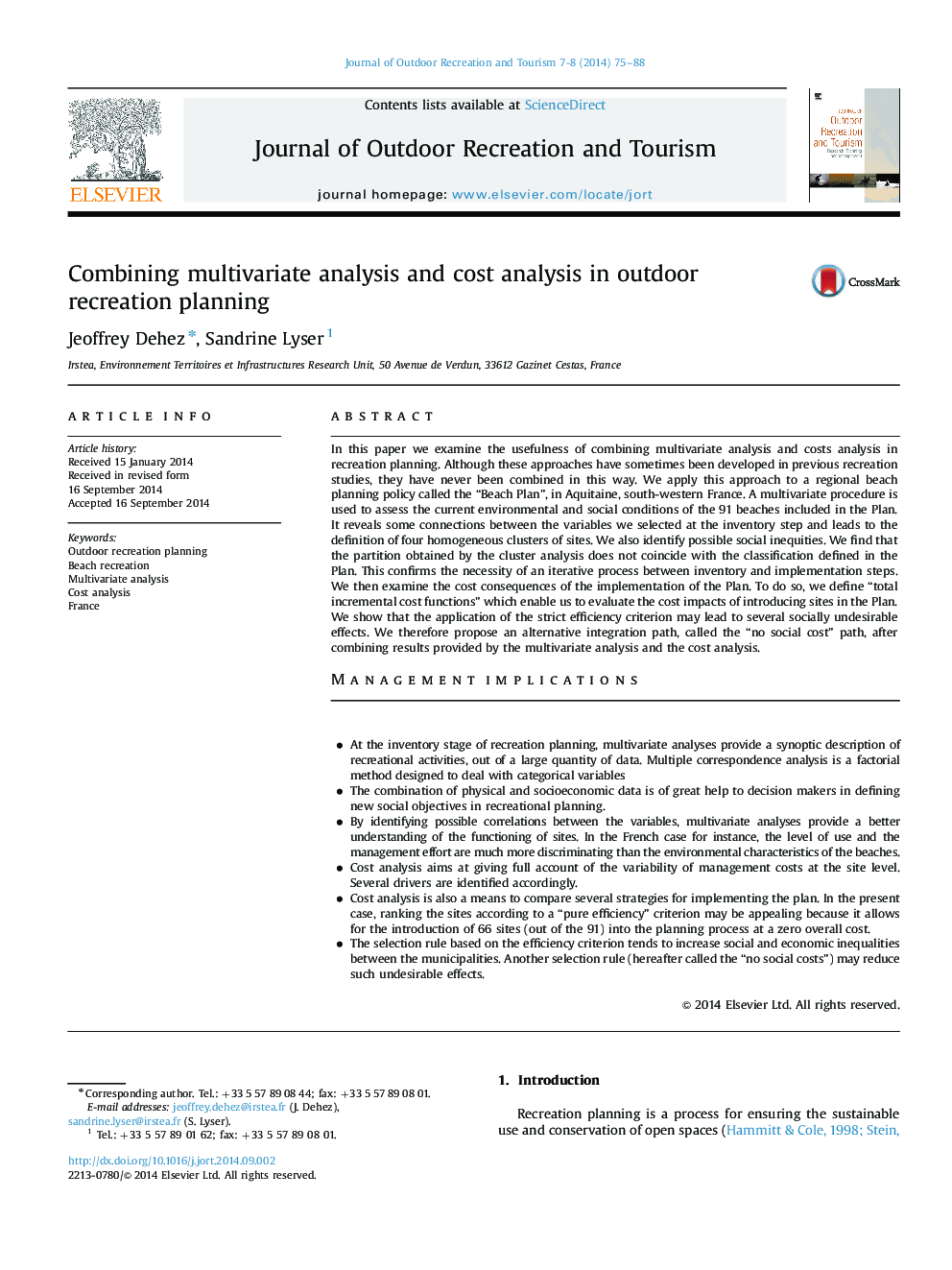| کد مقاله | کد نشریه | سال انتشار | مقاله انگلیسی | نسخه تمام متن |
|---|---|---|---|---|
| 92400 | 159954 | 2014 | 14 صفحه PDF | دانلود رایگان |
In this paper we examine the usefulness of combining multivariate analysis and costs analysis in recreation planning. Although these approaches have sometimes been developed in previous recreation studies, they have never been combined in this way. We apply this approach to a regional beach planning policy called the “Beach Plan”, in Aquitaine, south-western France. A multivariate procedure is used to assess the current environmental and social conditions of the 91 beaches included in the Plan. It reveals some connections between the variables we selected at the inventory step and leads to the definition of four homogeneous clusters of sites. We also identify possible social inequities. We find that the partition obtained by the cluster analysis does not coincide with the classification defined in the Plan. This confirms the necessity of an iterative process between inventory and implementation steps. We then examine the cost consequences of the implementation of the Plan. To do so, we define “total incremental cost functions” which enable us to evaluate the cost impacts of introducing sites in the Plan. We show that the application of the strict efficiency criterion may lead to several socially undesirable effects. We therefore propose an alternative integration path, called the “no social cost” path, after combining results provided by the multivariate analysis and the cost analysis.Management implications
• At the inventory stage of recreation planning, multivariate analyses provide a synoptic description of recreational activities, out of a large quantity of data. Multiple correspondence analysis is a factorial method designed to deal with categorical variables
• The combination of physical and socioeconomic data is of great help to decision makers in defining new social objectives in recreational planning.
• By identifying possible correlations between the variables, multivariate analyses provide a better understanding of the functioning of sites. In the French case for instance, the level of use and the management effort are much more discriminating than the environmental characteristics of the beaches.
• Cost analysis aims at giving full account of the variability of management costs at the site level. Several drivers are identified accordingly.
• Cost analysis is also a means to compare several strategies for implementing the plan. In the present case, ranking the sites according to a “pure efficiency” criterion may be appealing because it allows for the introduction of 66 sites (out of the 91) into the planning process at a zero overall cost.
• The selection rule based on the efficiency criterion tends to increase social and economic inequalities between the municipalities. Another selection rule (hereafter called the “no social costs”) may reduce such undesirable effects.
Journal: Journal of Outdoor Recreation and Tourism - Volumes 7–8, December 2014, Pages 75–88
